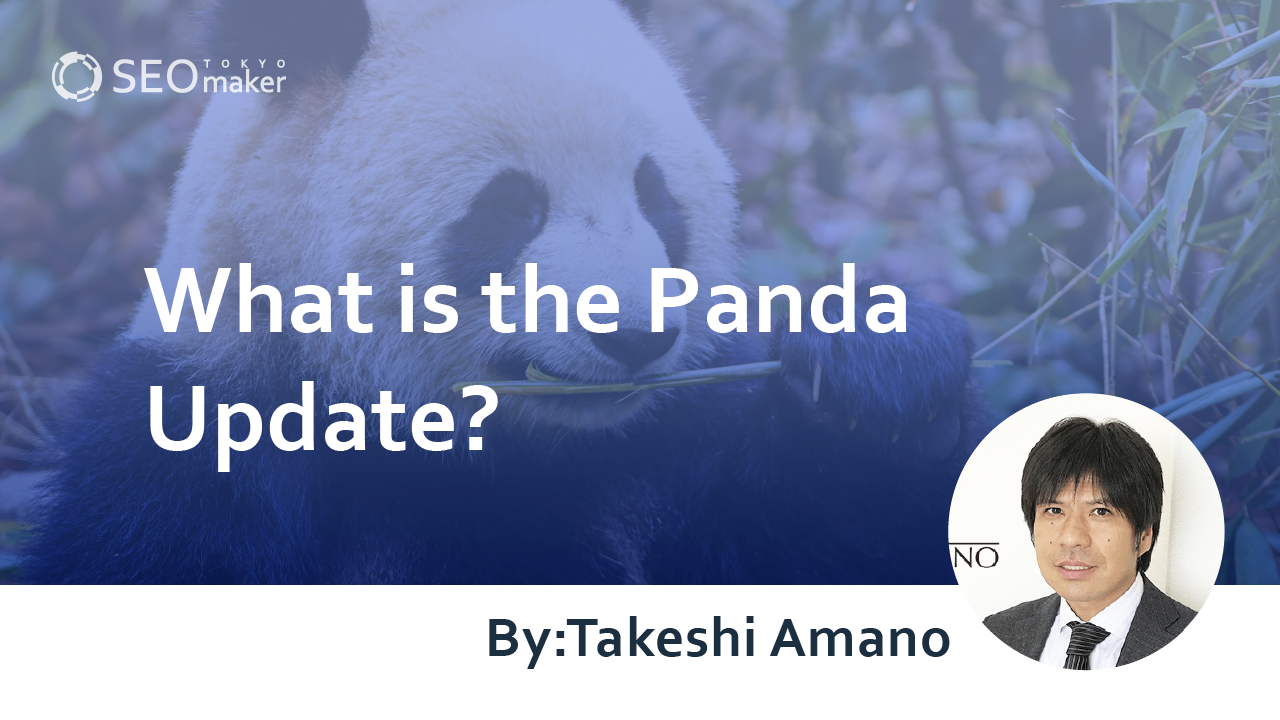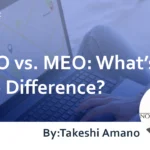What is the Panda Update? : How to Create a High-Quality Website
contents
- 1 What is the Panda Update?
- 1.1 Intent of the Panda Update
- 1.2 Sites Targeted by the Panda Update
- 1.2.1 Thin content
- 1.2.2 Duplicated Content
- 1.2.3 Low-Quality Content
- 1.2.4 Content Lacking Authority or Trustworthiness
- 1.2.5 Low-Quality User-Generated Content (UGC)
- 1.2.6 High Ratio of Advertisements in Content
- 1.2.7 Content Not Matching Search Intent
- 1.2.8 Worthless Affiliate Content
- 1.2.9 After the Panda Update
- 1.3 Recovery from Panda Update
- 1.4 Creating High-Quality Websites
- 2 Summary

The Panda Update was an algorithm update for Google’s search engine, conducted to eliminate low-quality content from search results. It was implemented in English-speaking countries in February 2011 and in Japan in July 2012.
At the time, many sites suffered significant impacts. However, from the perspective of improving the internet, it was an innovative update. The principles behind the Panda Update remain useful for content creation today.
Currently, the system has evolved and became part of Google’s core ranking system in 2015, marking its discontinuation. The Panda system has either been integrated into subsequent systems or is part of the core ranking system. This section explains the past Panda Updates.
What is the Panda Update?
The Panda Update was a search algorithm update by Google, designed to prevent low-quality content that lacks value to users from appearing in search results. It was first introduced in English-speaking regions in February 2011 and in Japan in July 2012.
Before the Panda Update, it was common for content of little to no use to users to appear high in search rankings depending on SEO strategies, significantly compromising the user experience.
However, Google has focused on enabling users to quickly access the information they truly need. As a result, the algorithm was significantly updated to lower the rating of sites containing worthless pages.
The impact on the SEO industry at the time was substantial, with over 10% of search results reportedly shifting dramatically. This forced many media outlets to change their strategies. Nevertheless, in terms of accurately evaluating the information needed by users, it was an update of high utility.
Intent of the Panda Update
Regarding the Panda Update, Google has communicated the following through its official blog
“This update is designed to reduce rankings for low-quality sites – sites which are low-value add for users, copy content from other websites, or sites that are just not very useful. At the same time, it will provide better rankings for high-quality sites – sites with original content and information such as research, in-depth reports, thoughtful analysis, and so on. “
Citation: Finding more high-quality sites in search(Google Official Blog)
This means the Panda Update was designed to lower the rankings of low-quality sites, targeting those with little added value for users, those that copy content from other websites, and sites that are not very useful.
Furthermore, the update aims to improve the rankings of high-quality sites that feature original content and information, including research, in-depth reports, and thorough analysis.
The background of this update’s introduction necessitates an understanding of content farms prevalent at the time. Content farms are sites that hold a large amount of content providing little to no value to users and appeared high in search results due to SEO tactics.
At that time, black-hat SEO was prevalent, allowing even valueless content to rank high.
However, content farms were significantly impacted by the Panda Update. Consequently, Danny Sullivan, the founder of the well-known SEO media outlet Search Engine Land, initially called it the Farmer Update.
Later, as Google internally referred to it affectionately as Panda, the name Panda Update became recognized.
Sites Targeted by the Panda Update
The Panda Update is a ranking system that lowers the ranks of low-quality content while elevating high-quality content. Therefore, the sites targeted by the update include those engaged in practices like content farming, characterized by
- Thin content
- Duplicate content
- Low-quality content
- Content lacking authority or trustworthiness
- Poor user-generated content
- Content with a high ratio of advertisements
- Content not matching search intent
- Worthless affiliate content
Thin content
Sites as such when pages have very little substantive text or resources are evaluated as thin contents. Sites with just a few sentences of text per page cannot rank high.
Duplicated Content
Content that appears in multiple places on the internet and is copied is considered duplicated content and is targeted by updates.
For instance, companies with multiple branches that have nearly identical pages except for the city name are also likely to be judged as having duplicated content and should be avoided.
Low-Quality Content
Pages that provide little value to users due to insufficient information are considered low-quality content and targeted by updates. Sites with many pages stuffed with specific keywords for the sake of ranking higher are at risk.
Content Lacking Authority or Trustworthiness
Content that lacks authority and trustworthiness is also targeted by updates. Information disseminated should have sufficient credibility, and authoritative sites related to the theme are required to publish it.
Low-Quality User-Generated Content (UGC)
User-generated content (UGC) in itself is not a problem. However, much UGC tends to be brief and often lacks reliable information, posing a risk when used as the main content.
High Ratio of Advertisements in Content
Users seek content, not advertisements. Thus, content with an excessively high ratio of advertisements may be subject to regulation.
Content Not Matching Search Intent
Content that does not align with the title displayed in search results can significantly diverge from user search intent and may be targeted by updates.
Worthless Affiliate Content
These are pages with scant content focused solely on product sales. Particularly, low-quality content created for affiliate purposes is targeted by updates.
After the Panda Update
Initially, after its launch in 2011 (2012 in Japan), the Panda Update was manually updated with each change announced. However, post-March 2013, it was integrated into the regular algorithm, and updates became automated.
From its introduction in 2011 to March 2013, the impact and update history of Panda were as follows.
- February 24, 2011: Affected 11.8% of search results
- April 11, 2011: Affected 2% of search results
- May 10, 2011: No announcement
- June 16, 2011: No announcement
- July 23, 2011: No announcement
- August 12, 2011: Affects 6-9% of search results
- September 28, 2011: No announcement
- October 19, 2011: Affects about 2% of search results
- October 19, 2011: Affects less than 1% of search results
- January 18, 2012: No announcement
- February 27, 2012: No announcement
- March 23, 2012: Affects about 1.6% of search results
- April 19, 2012: No announcement
- April 27, 2012: No announcement
- June 9, 2012: Affects 1% of search results
- June 25, 2012: Affects about 1% of search results
- July 24, 2012: Affects about 1% of search results
- August 20, 2012: Affects about 1% of search results
- September 18, 2012: Affects less than 0.7% of search results
- September 27, 2012: Affects 2.4% of search results
- November 5, 2012: Affects 1.1% of search results
- November 21, 2012: Affects 0.8% of search results
- December 21, 2012: Affects 1.3% of search results
- January 22, 2013: Affects 1.2% of search results
- March 15, 2013: No announcement
- June 18, 2013: Announced that updates will continue but not be publicly disclosed
Reference: Google Confirms Panda Update Is Rolling Out: This One Is More ‘Finely Targeted’ (Search Engine Land)
Recovery from Panda Update
Recovering from a Panda Update is considered difficult in the SEO industry. However, given that the update aimed to remove non-user-friendly content, improving the overall quality of a site could facilitate recovery.
Over the years, even sites that were pushed out of the rankings have managed to return to the top of search results through consistent improvement.
Therefore, the recommended actions include
- Stopping content farming practices
- Enhancing content quality, usefulness, relevance, reliability, and authority
- Reassessing the ratio of advertisements and affiliate content to actual content
- Ensuring content aligns with search intent
- Eliminating or revising duplicate content
- Considering filtering user-generated content
- Regulating duplicate content indexing with ‘noindex’ or ‘nofollow’ tags
Sites offering high-quality, unique content need not fear the Panda Update. However, if a site’s search ranking drops suddenly due to content issues, it’s crucial to reassess whether it truly offers value to users.
Creating High-Quality Websites
Google has published guidance on creating high-quality websites, detailing the aspects that need review.
Particularly, the 23 questions in the guidance touch upon the core aspects of a site, indicating that if any doubts arise, there’s room for improvement.
Several factors can lead to being impacted by updates, but content quality is a significant one. At a minimum, the following five criteria should be checked.
Expertise
The source of information is crucial. For high-expertise fields like medicine or law, content should be created or reviewed by experts. Even within the same topic, the credibility of the source, such as whether they are specialists, is vital.
Content Quality
The trustworthiness of an article increases with multi-faceted analysis and clear evidence. Clarity for the user is also essential, meaning the use of lists, tables, images, and citations should be considered to enhance understanding.
Advertising Placement
Users seek information, not ads. While advertising itself is not an issue, a high ratio of ads can become a regulatory target. This applies to affiliate sites as well.
Duplicate Content
Avoid duplication with other sites, and within your own site, repeated content on the same theme or merely changing proper nouns for mass production needs correction.
Good content has the potential to be shared on social media platforms like Twitter and Facebook. While it’s beneficial to include social media sharing buttons, it’s crucial to revisit the content’s inherent shareability.
Summary
The Panda Update is a core algorithm update that eliminates low-quality content. It significantly impacted the SEO industry, signaling a shift towards rewarding high-quality content provision. This change was a substantial positive shift for search engines, especially considering the pre-2010 SEO focus on external links. It emphasizes the importance of focusing on content quality in planning.










![What is a Description? Explaining the Meaning, Writing Style, and Changing Word Count – [2023 Edition]](https://www.switchitmaker2.com/en/wp-content/uploads/2024/09/what-is-description.webp)










